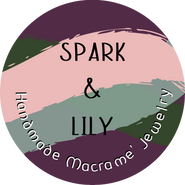
Macrame is a technique of knotting cords that produces a rough lace-like fabric. Believed to be Arabic in origin. The basic knots are the half hitch, full hitch, square knot, and double half hitch.
Origin of the word Macramé:
There are debates that say the word macramé is of French descend but most experts agree it that it came from the word migramah and migrama , all words associated in Arabic with weaving and head coverings, and the Turkish word makrama meaning fringed towels or napkins.
History of macrame:
One of the earliest recorded uses of macramé-style knots as decoration appeared in the carvings of the Babylonians and Assyrians. Fringe-like plaiting and braiding adorned the costumes of the time and were captured in their stone statuary.
Arab weavers knotted excess thread along the edges of hand-loomed fabrics such as towels, shawls, and veils into decorative fringes. The decorative fringes also helped to keep flies off camels and horses in northern Africa.
The Moorish conquest took the craft to Spain, then Italy, especially in the region of Liguria, then it spread through Europe. In England, it was introduced at the court of Mary II in the late 17th century. Queen Mary taught it to her ladies-in-waiting.
Macramé was most popular in the Victorian era. It adorned most homes in items such as tablecloths, bedspreads and curtains. Sailors made macramé objects while not busy at sea, and sold or bartered them when they landed, thus spreading the art to places like China and the New World. Nineteenth-century British and American sailors made hammocks, bell fringes, and belts from macramé. They called the process "square knotting" after the knot they used most often. Sailors also called macramé "McNamara's lace".
Macramé's popularity faded, but resurged in the 1970s for making wall hangings, clothing accessories, small jean shorts, bedspreads, tablecloths, draperies, plant hangers and other furnishings. Macramé jewelry became popular in America. Using mainly square knots and granny knots, this jewelry often features handmade glass beads and natural elements such as bone and shell. Necklaces, anklets and bracelets have become popular forms of macramé jewelry. By the early 1980s, macramé again began to fall out of fashion, only to have it revived by millennials.
Materials used in macramé include cords made of cotton twine, linen, hemp, jute, leather or yarn. Cords are identified by construction, such as a 3-ply cord, made of three lengths of fibre twisted together.[2] Jewelry is often made in combination of both the knots and various beads (of glass, wood, and so on), pendants or shells. Sometimes 'found' focal points are used for necklaces, such as rings or gemstones, either wire-wrapped to allow for securing or captured in a net-like array of intertwining overhand knots. A knotting board is often used to mount the cords for macramé work.
